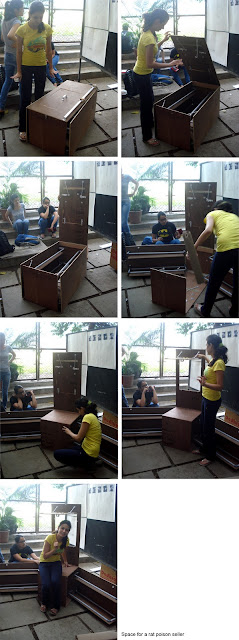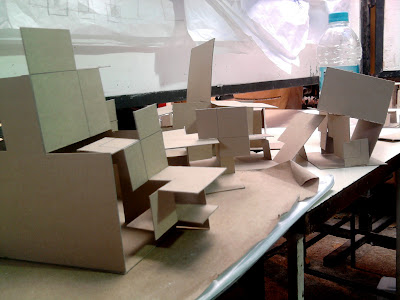Parents,
even if they try to, cannot live without expectations from their progeny. This
is perhaps a natural instinct – a give and take relationship. There were
already films in ’70s which raised the issue of children ignoring their parents
while they grew old. Others sensitized the tension of difference in thought
between the generations. Recent films like Baghban, Dil chahta hai, etc bring
out several issues of this gap very sharply. Where does the problem actually
lie? Every age is a generation, so there ought to be a generation gap in a
parent and child span. 30 years. Very
few of the older generations actually are able to connect to their children.
There is a change in the value systems, in the way things are understood around
them and even the priorities of children change. Then how are relationships
understood and expected to remain ideal? Parents always expect their children
to take care of them, to support them, to help them financially. Yes, they did
that for us too when we were small. But didn’t they know they had to do it
anyway before having a child? Are children investments - Social, moral,
financial, emotional? And when they do not give expected returns, issues spring
up.
I
don’t think there has been any film constructed from the point of view of the
children. There is a tremendous pressure on the children itself – balancing
their own ambitions, managing the family (starting a new one, and keeping the
old one), etc. The argument will be: “We did that too” – to which the counter
argument is “then why don’t you understand the situation? The circumstances and
the complexities of life today have increased, only because the number of
options available have increased.” It’s infinitely difficult to communicate
this to the parents. Communication has always been a tricky issue in
conventional Indian families. Most of the children fear the head of the family.
Hence, all talk is routed through someone.
When
children grow older, able, and self dependent, they do not understand what kind
of a relationship to maintain with the otherwise head of the family. Ours is a
patriarchal family system. This head of the family is generally a head
primarily because he supports the family financially, according to me. Another
is of course the political power that he
has in the family. When this head retires, the power automatically transfers to
the succeeding financial figure. But how does this new financial position get
constructed? I mean, when does a son or daughter decide that he/she would start
contributing money for household affairs? How are such decisions taken – these
are extremely political, and what when the number of earning heads are more
than one?
Education,
although on one hand enables children to become more sensitive to parents, it
also makes themselves more ambitious and rational. In the pursuit of
rationality, children question most things – what they wear, eat, drink, live,
use and even relationships. How must parents handle this? Or what should the
parents expect out of such relationships? Parents try and educate their
children as much as possible, but isn’t it hitting their own heads? Because
children are going to be more self contained, self exploratory and self
sufficient – perhaps a law of nature. Each time in each generation is a new
individual constructed. This is bound to be different from the old one. But
this new and old creates a lot of friction.
Someone
told me that some friction is good. If a child chooses to keep his/her parents
happy, is it necessary that his/her happiness too lies in that? These questions
bother me all the time. My ethical stance is to keep everyone around me,
related to me in any way, happy. How does that help me though? I wonder. But relationships are complex. And expression towards such
relationships is very difficult. The generation gap is what perhaps makes the
expression difficult. How must the parents deal with children to make them more
comfortable to talk to them? May be, here I must get specific about certain
kind of conventional families, where children in their formative years face
this kind of extreme difficulty to convey their emotions to parents.
In traditional Indian family systems, the
childhood is a period is which the child is trained in family values – social,
moral, ethical codes of conduct. The aspect of communication within a family is
never dealt with. The emphasis is on teaching – in a crude sense, giving. It is
never believed that one could learn anything from kids. Kids are to be attuned
to the society and in the process of training in social values, a lot is
already lost. Moreover, while communication is not the agenda, it itself is
institutionalized. Implied codes regarding what must be spoken and what not are
inflicted. Sharing of emotions at a later age becomes a gestural act. Emotions
are then to be understood through acts and are not really expressed. At a
mature age, it is even embarrassing for most to publicly express happiness or
sadness since it has either never been done before or it seems a socially
misfit act.
It becomes very difficult for my father to
acknowledge or appreciate me in public. He stumbles and doesnot know what to
say. My mother ends up expressing her happiness by talking about it to as many
people as possible – neighbours, friends, relatives, etc. On father’s
promotion, a silent sweet is prepared at home. The tastefulness of this sweet
is not orally acknowledged, but suggested by eating a bowl extra. During a
festival, new clothes suggest happiness. Gifts on the table for success become
ways to express happiness. All becomes suggestive. Such over-suggestion is
repressive. It is implosive. Objects, than
something that was once emotive, become more important. This lack of
communication suppresses a lot of expression.
On the other hand, during tough times, a
maudlin silence pervades the atmosphere of the home. Behaviour becomes stricter.
Television programmes are moderated, volume of talk is regulated. Eye contacts
are stolen; everyone looks at the walls or dead vantage points. Low moods are
never discussed – the feeling of vulnerability is seldom a part of the
institution of the family. The family always
presumes an ideal role for itself. Perhaps it is due to its hegemonic social
function of keeping all the state of affairs at home in a happy condition.
But I am very concerned about the how members
of a family talk to each other. I believe that the hermetic way in which
traditional Indian families behave is detrimental to furthering of social
values and the problem lies in the training period of the child during early
days.
This is a highly “under construction” post. Feedback is most welcome.
Earlier threads of 'baghban' can be searched at "Search This Blog" Section (Type Baghban)


























